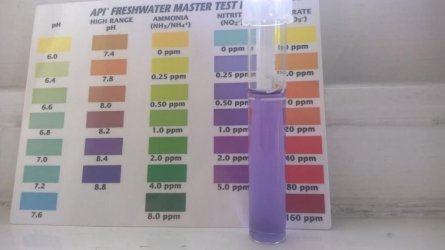TwoTankAmin
Fish Connoisseur
change a lot of water- at 16 ppm nitrite is starting to inhibit a cycle and at 32 you are likely killing off bacteria.
Part II of those articles is where I have put information on ammonia and nitrite as well as on how to do diluted testing. Its easier for me to send folks to Part II for the diluted testing directions than to have to post them over and over
The are both a lot of similarities as well as several major differences between fishless and fish in cycling. The most important considerations, imo, are that fishless never harms any fish or inverts, it lets one stock fully when done which takes a whole lot longer when done fish in. But bear in mind that for a very long time there was no such thing as fishless cycling and tanks were always cycled with fish. The overall process of cycling is the same both ways. Perhaps the biggest benefit of fishless cycling is the use of seed media and/or the use of one of the viable bacterial stater products. It is now even possible to set up a tank and have it be cycled instantly if you have enough of the right things to put into it.
Part II of those articles is where I have put information on ammonia and nitrite as well as on how to do diluted testing. Its easier for me to send folks to Part II for the diluted testing directions than to have to post them over and over
The are both a lot of similarities as well as several major differences between fishless and fish in cycling. The most important considerations, imo, are that fishless never harms any fish or inverts, it lets one stock fully when done which takes a whole lot longer when done fish in. But bear in mind that for a very long time there was no such thing as fishless cycling and tanks were always cycled with fish. The overall process of cycling is the same both ways. Perhaps the biggest benefit of fishless cycling is the use of seed media and/or the use of one of the viable bacterial stater products. It is now even possible to set up a tank and have it be cycled instantly if you have enough of the right things to put into it.


